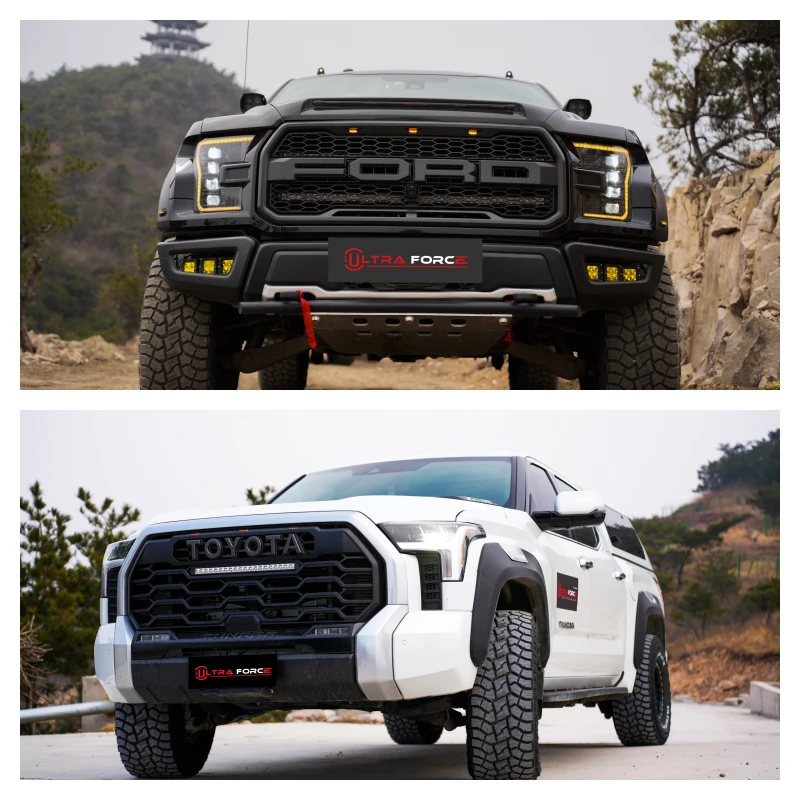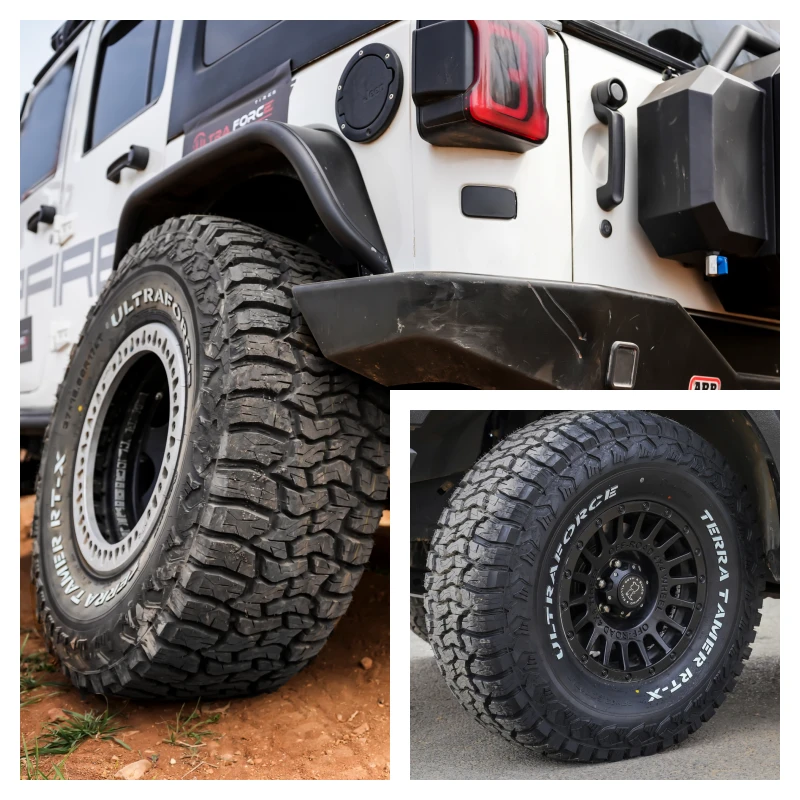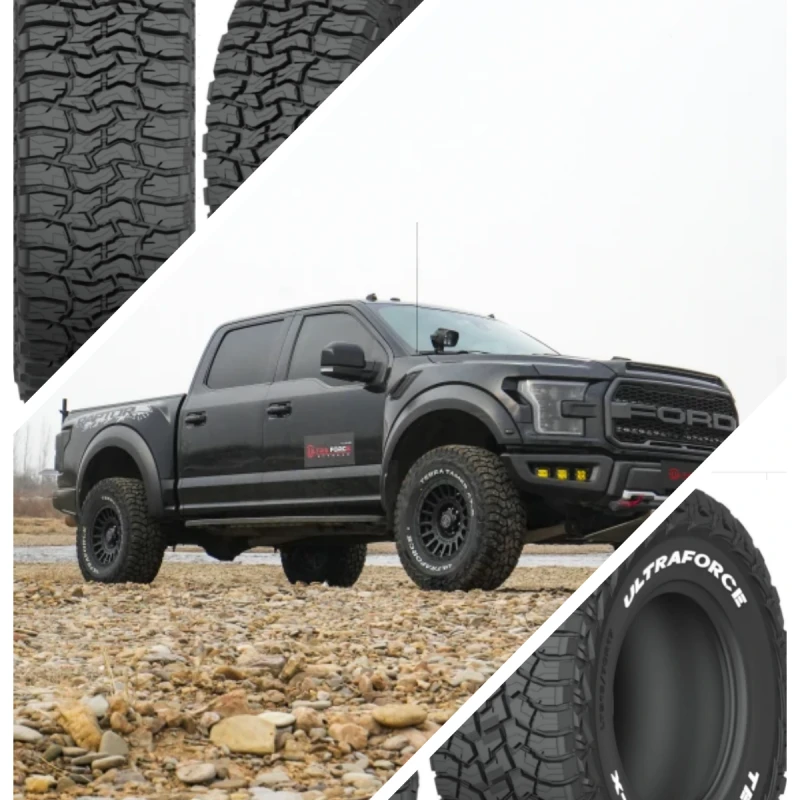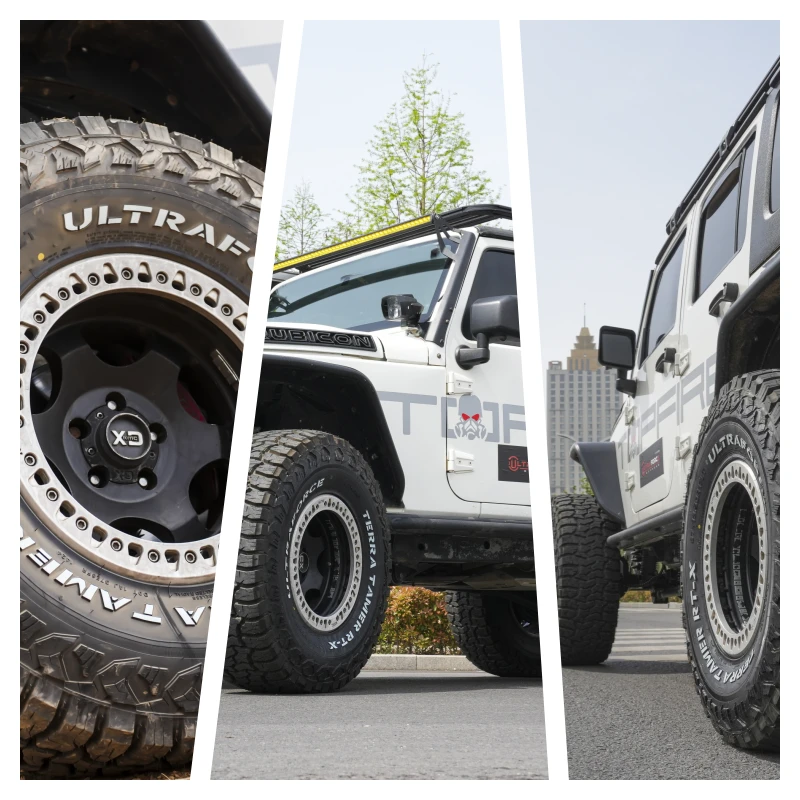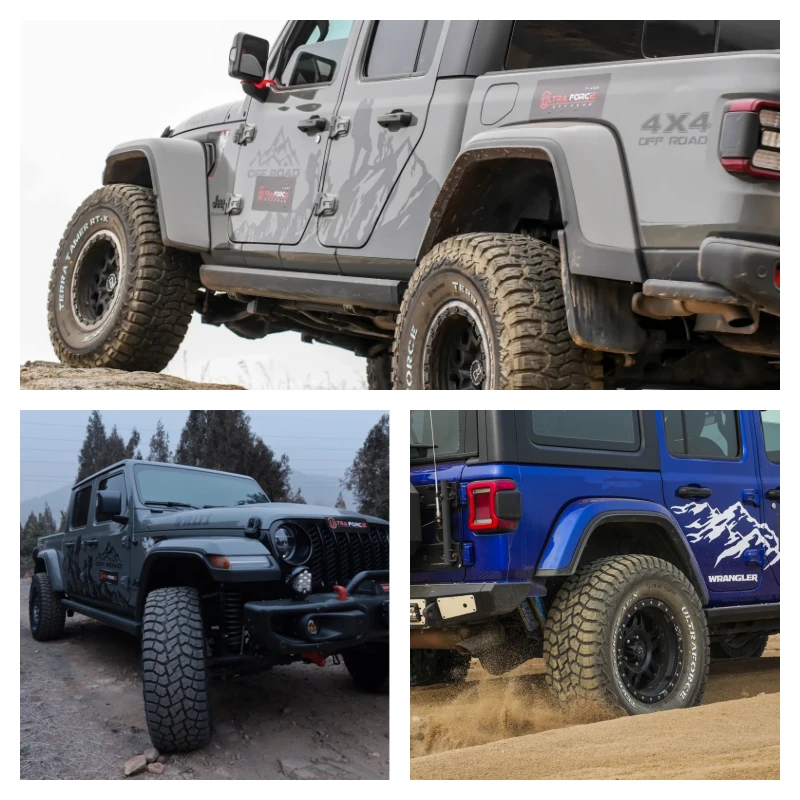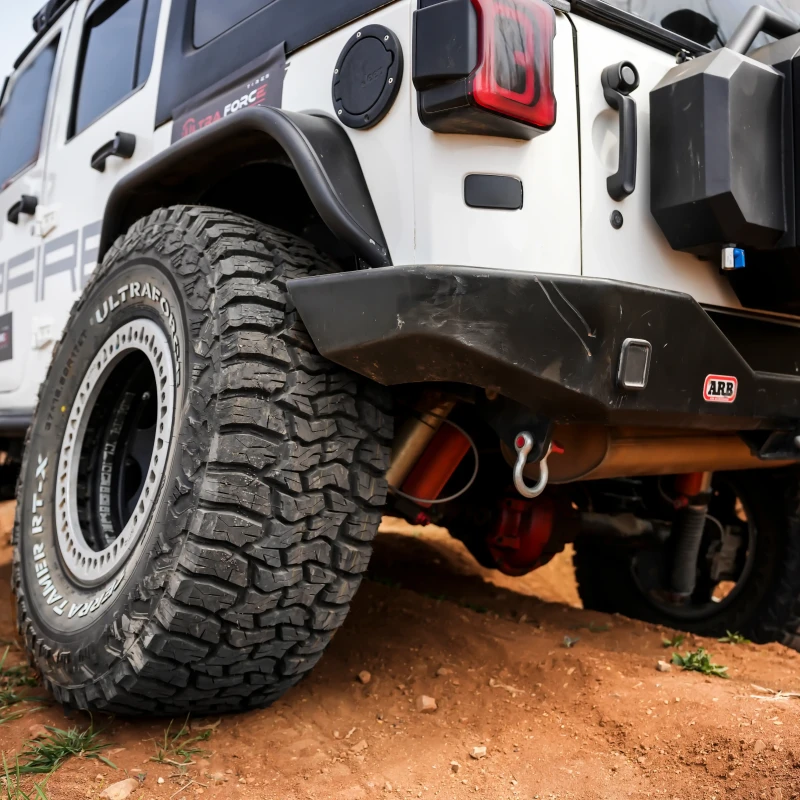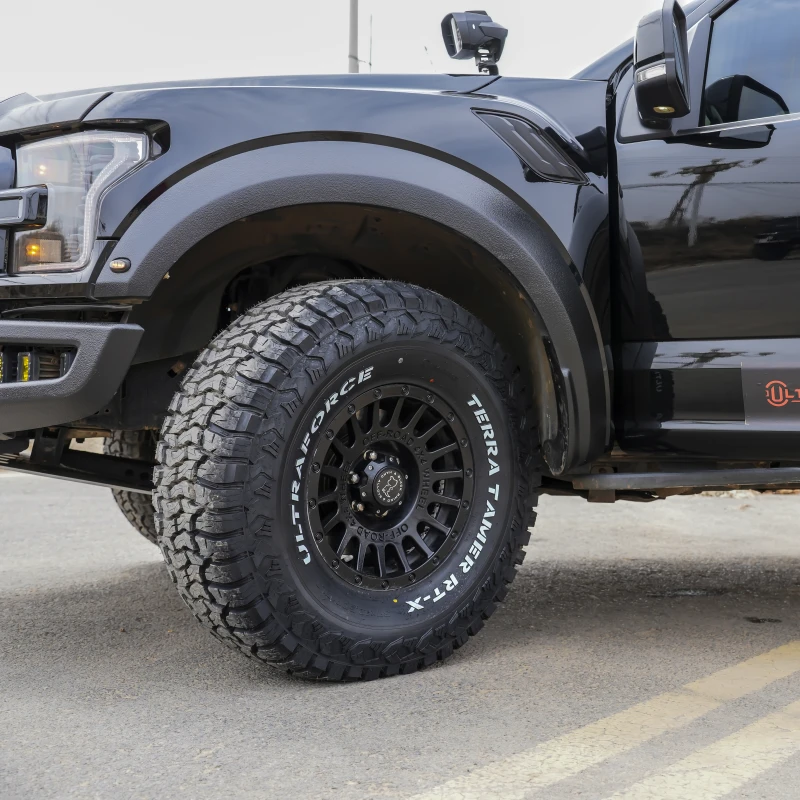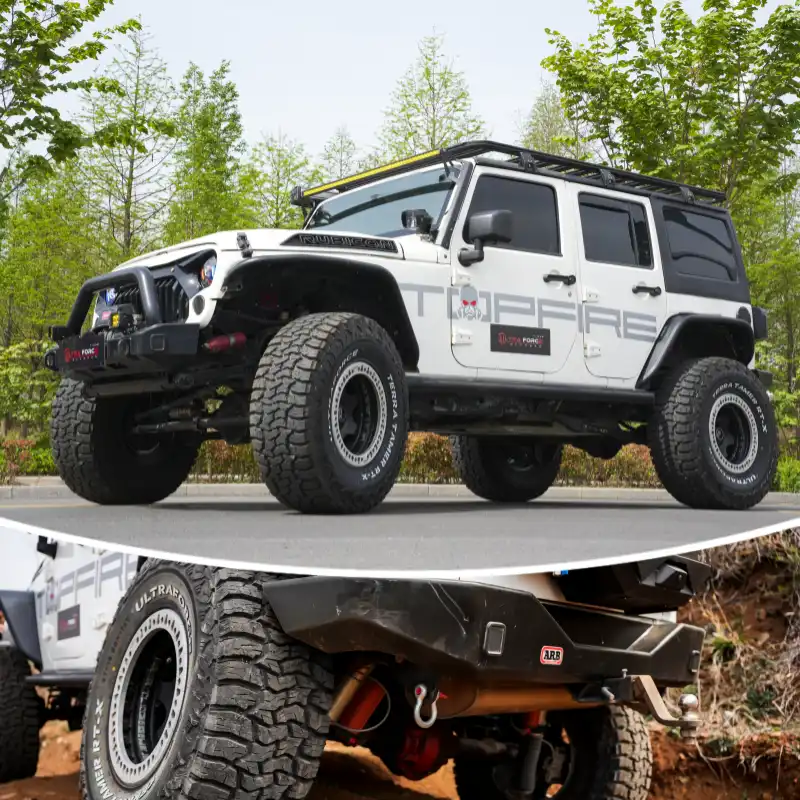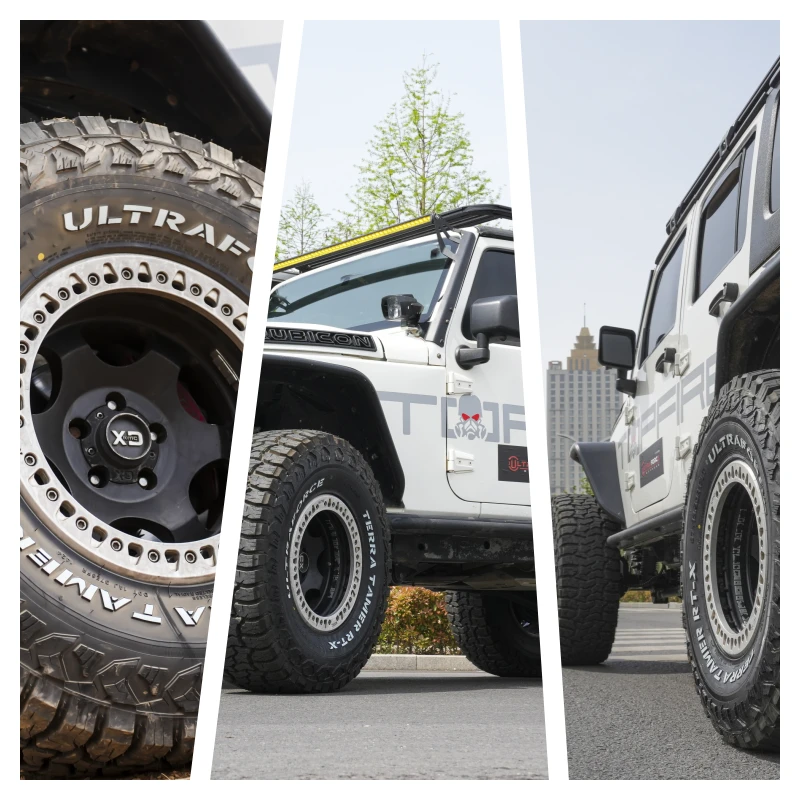Snow Tires for Jeep: A Comprehensive Guide
When it comes to navigating winter conditions, choosing the right tires can significantly impact your Jeep's performance. Snow tires are specifically designed to enhance traction, handling, and braking on snowy and icy roads. This article will explore the benefits of snow tires for Jeeps, discuss key factors to consider when selecting them, and provide data-backed insights to help you make an informed decision.
Understanding Snow Tires
Snow tires, also known as winter tires, are made from specialized rubber compounds that remain flexible in low temperatures. Unlike all-season tires, which are a compromise for various conditions, snow tires excel in cold, snowy, and icy environments. They feature unique tread patterns designed to channel snow and slush, improving grip and stability.
Benefits of Snow Tires for Jeep
Enhanced Traction: The tread design and rubber composition of snow tires allow for superior grip on slippery surfaces. This is crucial for maintaining control while driving on snow-covered roads.
Shorter Stopping Distances: Snow tires significantly reduce stopping distances in winter conditions. Research shows that vehicles equipped with snow tires can stop up to 30% shorter than those with all-season tires.
Improved Handling: The design of snow tires offers better cornering stability, reducing the risk of skidding or losing control while turning.
Key Factors to Consider
When selecting snow tires for your Jeep, several factors come into play:
Tire Size: Always refer to your owner's manual for the recommended tire size. Common sizes for Jeep models include 225/75R16 and 245/75R17.
Tread Pattern: Look for tires with a deeper tread depth and unique patterns designed for snow traction.
Studded vs. Non-Studded Tires: Studded tires offer superior traction on ice, but may not be legal in all areas. Non-studded tires are suitable for general winter conditions and provide a smoother ride on bare pavement.
Temperature Ratings: Ensure the tires are rated for winter temperatures. Most snow tires perform best when temperatures dip below 45°F.
Research Data on Snow Tire Performance
To illustrate the benefits of snow tires, let’s look at some specific data regarding performance metrics. The following tables provide a comparative analysis of snow tires versus all-season tires in various conditions.
Table 1: Stopping Distances on Snow
| Tire Type | Speed (mph) | Stopping Distance (feet) |
|---|---|---|
| All-Season Tires | 30 | 60 |
| Snow Tires | 30 | 42 |
| Improvement | - | 30% shorter |
Table 2: Traction Performance Ratings (Coefficient of Friction)
| Tire Type | Dry Conditions | Wet Conditions | Snow Conditions | Ice Conditions |
|---|---|---|---|---|
| All-Season Tires | 0.85 | 0.65 | 0.35 | 0.15 |
| Snow Tires | 0.90 | 0.75 | 0.65 | 0.50 |
Choose The Right Snow Tires for Your Jeep
Choosing the right snow tires for your Jeep involves several considerations to ensure optimal performance, safety, and compatibility with your vehicle. Here are the key factors to keep in mind:
Tire Size: The first step is to determine the correct tire size for your Jeep. Refer to your owner’s manual or the driver’s side door jamb for the manufacturer's specifications. Common sizes for Jeep models, such as the Wrangler and Cherokee, include 225/75R16 and 245/75R17. It’s crucial to select tires that match these specifications to maintain the vehicle’s handling and performance.
Tread Pattern: Different snow tires feature varying tread designs tailored for specific conditions. Look for tires with a deep tread pattern and multiple biting edges for superior grip on snow and ice. Tires like the Bridgestone Blizzak WS90 and Michelin X-Ice Xi3 are popular among Jeep owners for their excellent performance in snowy conditions. Studies show that tread patterns with larger voids and unique designs can enhance traction by effectively channeling snow and slush away from the tire.
Studded vs. Non-Studded: Decide between studded and non-studded tires based on your driving environment. Studded tires provide superior traction on icy surfaces, making them ideal for areas with frequent ice storms. However, they may not be legal in all states or may be restricted during certain months. Non-studded tires, on the other hand, offer better versatility for mixed conditions and provide a quieter ride on bare pavement. For instance, Goodyear Ultra Grip Ice WRT tires are known for their excellent balance between ice performance and noise reduction.
Temperature Ratings: Ensure the tires you choose are rated for winter conditions. Snow tires are designed to perform optimally at temperatures below 45°F, where all-season tires may harden and lose grip. Look for tires that explicitly state their winter capabilities on the sidewall, often denoted by the snowflake symbol, which indicates they meet specific winter performance criteria.
Brand Reputation and Reviews: Research different tire brands and models to understand their performance characteristics. Websites like Tire Rack provide customer reviews and comparison tools to help you gauge how various tires perform in real-world conditions. Additionally, consulting local tire dealers can provide valuable insights based on regional weather patterns and road conditions.
In summary, selecting the right snow tires for your Jeep involves considering tire size, tread pattern, studded versus non-studded options, temperature ratings, and brand reputation. By carefully evaluating these factors, you can make an informed choice that ensures safety and performance throughout the winter months.
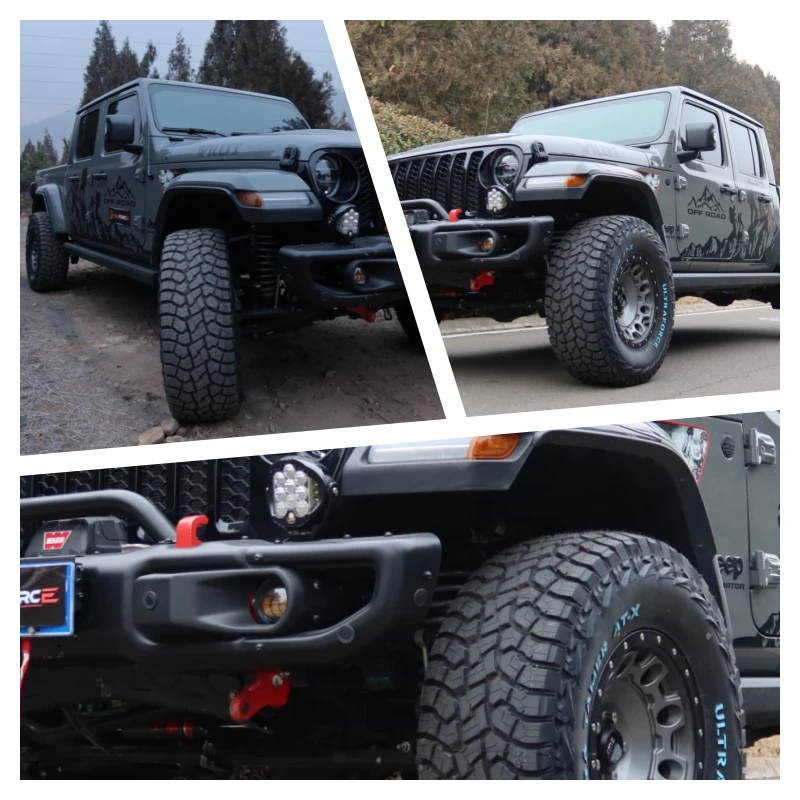
Popular Snow Tires for Jeep Models
Bridgestone Blizzak WS90
Features: Excellent traction on snow and ice, with a dual-layer tread for improved grip.
Ideal For: Jeep Wrangler and Jeep Cherokee.
Michelin X-Ice Xi3
Features: Known for longevity and fuel efficiency while providing exceptional winter performance.
Ideal For: Jeep Grand Cherokee.
Goodyear Ultra Grip Ice WRT
Features: Optimized for both ice and snow with a directional tread pattern.
Ideal For: Jeep Renegade.
Cost Considerations
When budgeting for snow tires, consider the following costs:
Tire Price: Snow tires typically range from $100 to $250 per tire, depending on brand and specifications.
Installation Costs: Expect to pay around $15 to $30 per tire for professional installation.
Storage Fees: If you don’t have space to store your off-season tires, storage fees may apply, generally around $50 to $100 per season.
Maintenance Tips for Snow Tires
Maintaining snow tires is crucial for ensuring optimal performance and longevity during the winter months. Here are key maintenance practices that every Jeep owner should follow to get the most out of their snow tires:
Regular Pressure Checks: Tire pressure can drop in colder temperatures, affecting performance and safety. For every 10°F drop in temperature, tire pressure can decrease by about 1 psi. Jeep owners should check their tire pressure at least once a month and before long trips. The recommended tire pressure for your specific Jeep model can be found in the owner’s manual or on the driver’s side door jamb. Maintaining the correct pressure ensures that the tires perform optimally, maximizing grip and fuel efficiency.
Tread Depth Monitoring: The tread depth of snow tires is a critical factor in their performance. Ideally, snow tires should have a tread depth of at least 6/32 of an inch. A simple way to check tread depth is by using a tread depth gauge or the penny test—insert a penny into the tread with Lincoln’s head facing down. If you can see all of Lincoln’s head, it’s time to replace the tires. Regularly monitoring tread depth ensures that the tires can effectively channel snow and slush, maintaining traction and safety.
Rotation and Alignment: To promote even wear and prolong the lifespan of snow tires, it’s important to rotate them every 5,000 to 7,500 miles. Jeep owners should also check wheel alignment, especially if they notice uneven tire wear or the vehicle pulling to one side. Proper alignment not only extends tire life but also improves handling and safety. Regular rotation patterns typically involve moving front tires to the rear and vice versa, often with a crisscross pattern to maintain balance.
Storage and Seasonal Changes: If you’re switching between snow tires and all-season tires, proper storage is essential for maintaining tire quality. Store tires in a cool, dry place away from direct sunlight, as UV rays can degrade rubber. Ideally, stack tires upright and avoid placing heavy objects on them. If storing mounted tires, consider hanging them to prevent deformation. When switching back to all-season tires, inspect them for any signs of wear or damage.
Visual Inspections: Conduct regular visual inspections of your snow tires to identify any issues early on. Look for cracks, bulges, or foreign objects lodged in the tread. If you notice any irregularities, have the tires checked by a professional. Additionally, keeping an eye on the tread pattern can help you identify if the tires are wearing unevenly, indicating the need for alignment or balancing.
Driving Habits: Adopting safe driving practices during winter can also extend the life of snow tires. Avoid aggressive acceleration, sudden braking, and sharp turns, which can lead to excessive wear. Instead, drive smoothly and maintain a safe distance from other vehicles to reduce the risk of skidding or losing control.
By following these maintenance practices, Jeep owners can ensure that their snow tires perform at their best throughout the winter season. Proper care not only enhances safety and performance but also extends the lifespan of the tires, providing a better return on investment.
The Importance of Snow Tires for Winter Driving
Snow tires, also known as winter tires, are crucial for driving in winter conditions due to their unique design and performance characteristics. The importance of snow tires stems from several key factors:
Specialized Rubber Composition: Unlike all-season tires, which use a harder rubber compound to maintain performance in a variety of conditions, snow tires are made from a softer rubber that remains flexible in cold temperatures. This flexibility allows them to maintain better grip on icy and snowy surfaces. According to the Rubber Manufacturers Association, snow tires perform best when the temperature drops below 45°F, as their tread compounds can grip the road better than traditional tires.
Tread Design: Snow tires feature deeper treads and unique patterns, often including a higher number of sipes—small slits in the tread that create additional biting edges for traction. These features help to channel snow and slush away from the tire, maintaining contact with the road surface. Research shows that vehicles equipped with snow tires can have stopping distances reduced by up to 30% compared to those using all-season tires. For example, a study conducted by the University of Michigan found that a vehicle traveling at 30 mph could stop in approximately 42 feet with snow tires, compared to 60 feet with all-season tires on snow-covered roads.
Enhanced Safety: The performance benefits of snow tires translate directly into safety advantages. A study by the National Highway Traffic Safety Administration (NHTSA) found that winter tires can significantly reduce the likelihood of accidents in winter conditions. In regions where heavy snowfall is common, such as the northeastern United States, drivers who use snow tires experience fewer accidents than those who rely on all-season tires. This statistic underscores the critical role snow tires play in ensuring safe driving during winter months.
Long-Term Cost Efficiency: While the upfront cost of snow tires may seem high, their ability to provide better traction and shorter stopping distances can ultimately save money by reducing the likelihood of accidents and damage to vehicles. Moreover, using snow tires during winter months can prolong the lifespan of all-season tires, as it prevents unnecessary wear from winter conditions.
In summary, snow tires are essential for anyone driving in winter conditions, especially Jeep owners who may tackle more rugged terrains. Their specialized rubber composition, unique tread designs, safety benefits, and long-term cost efficiency make them a worthwhile investment for safe winter driving.
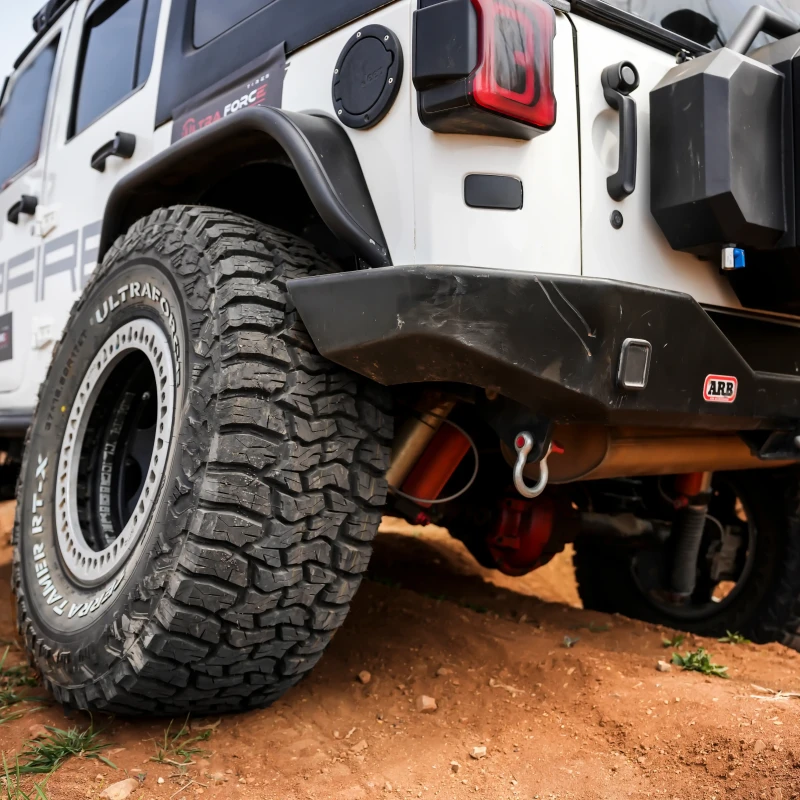
Conclusion
Investing in snow tires for your Jeep is essential for safe and effective winter driving. With enhanced traction, shorter stopping distances, and improved handling, snow tires provide significant advantages over all-season options. By considering factors like tire size, tread pattern, and specific performance ratings, you can make an informed choice that meets your driving needs.
For those navigating challenging winter conditions, the right snow tires will make all the difference in keeping you safe on the road. Don’t overlook this vital component of your winter driving strategy—equipping your Jeep with high-quality snow tires will ensure you enjoy a secure and comfortable ride throughout the cold months.
Discover UltraForce Tires
At UltraForce Tires, we understand the importance of having the right tires for every driving condition. As a professional designer and manufacturer of off-road and passenger tires, we bring decades of experience in product development and global export. Our commitment is to provide tires that excel in performance, durability, and superior traction.
Whether you’re conquering snowy roads or embarking on off-road adventures, our diverse range of tires is tailored to meet your needs across various terrains and weather conditions—from sand and gravel to muddy paths and snowy landscapes. We also offer customized services, including tread and sidewall design, size specifications, branding, and performance options tailored to different driving scenarios.
Choose UltraForce Tires as your trusted partner for an outstanding driving experience. Because at UltraForce, you (the consumer) mean a lot to us. Explore our selection today and gear up for every journey ahead!
